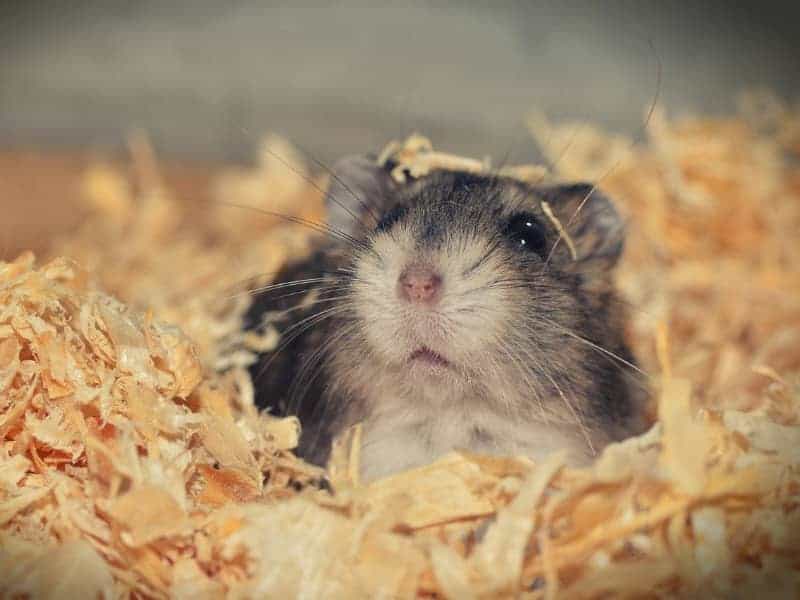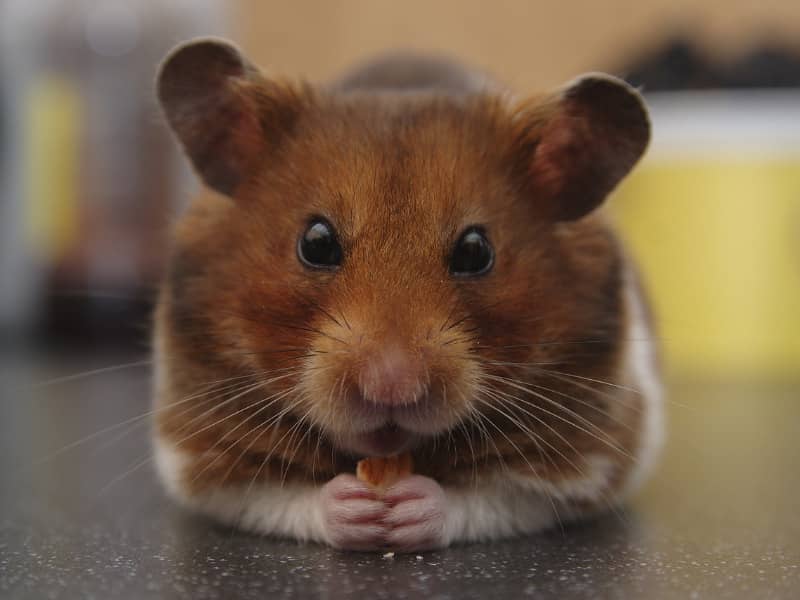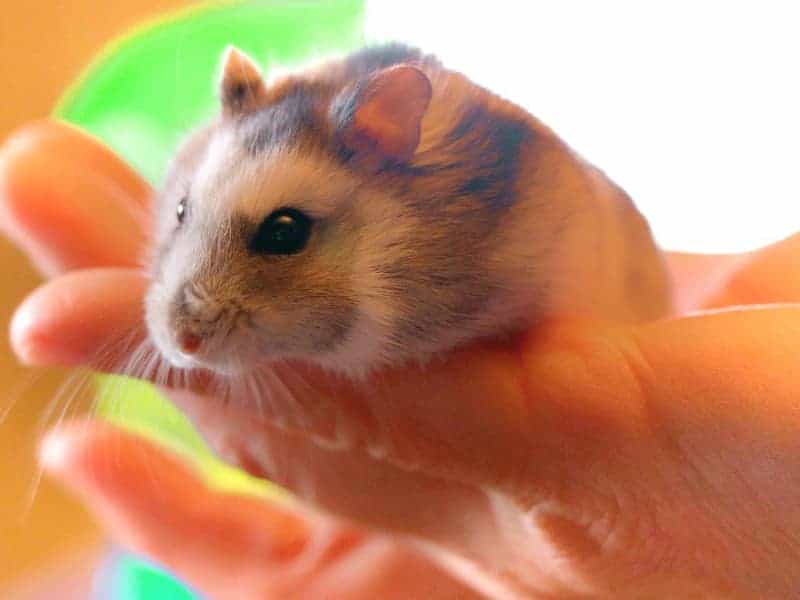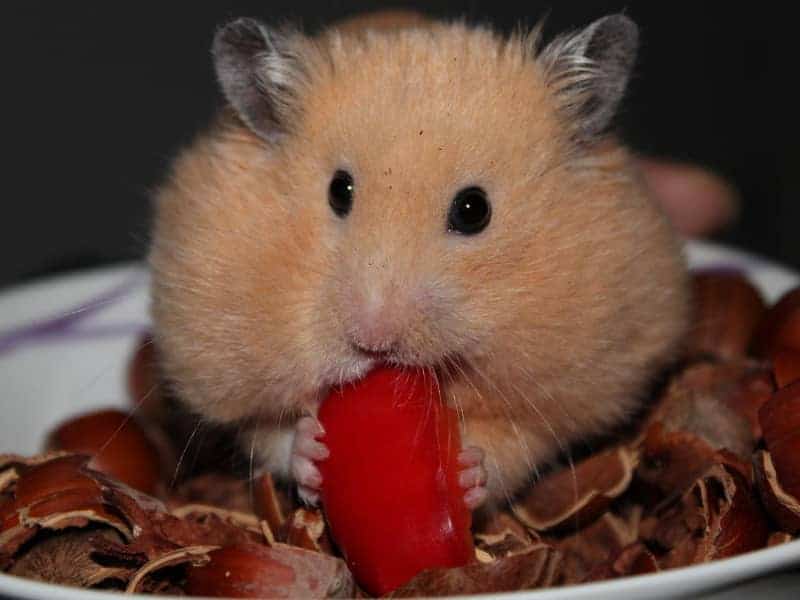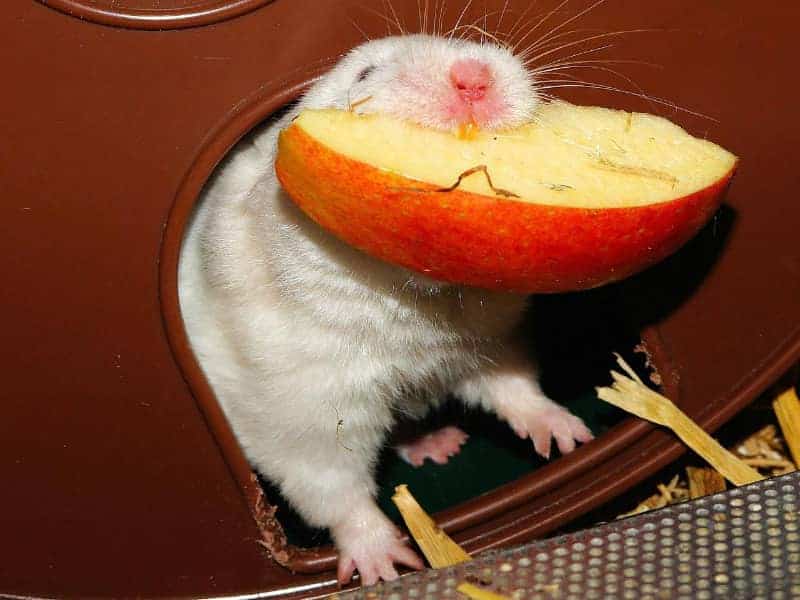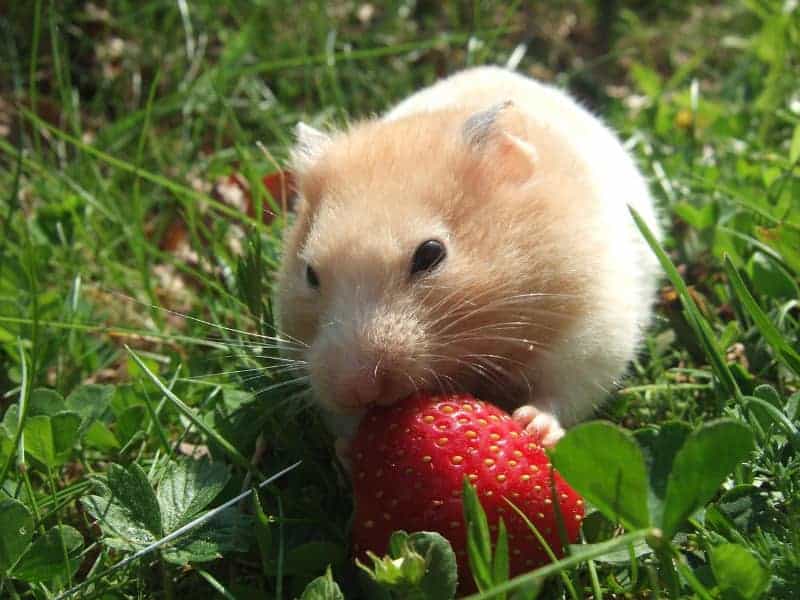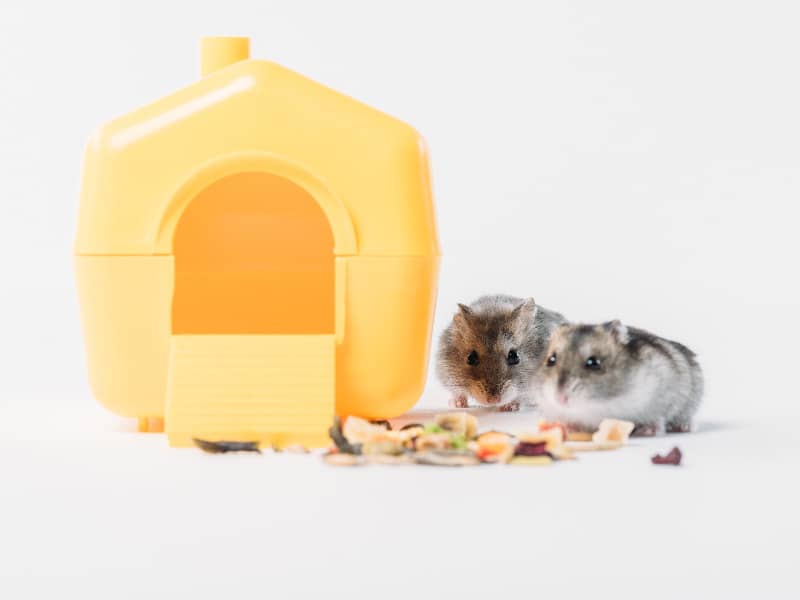
Dust lice hamsters
Dust lice are tiny insects that are often found in damp and dusty environments. They are generally harmless to humans but can be problematic for hamsters. The relevance of this issue for hamster owners should not be underestimated.
- Dust lice hamsters
- Hamster dust lice - the characteristics
- How do you recognize a dust lice infestation in the hamster cage?
- Prevention and control of dust lice in hamster enclosures
- How do you protect your hamster from dust lice?
- Conclusion: Dust lice hamsters
- Frequently Asked Questions (FAQ)
- How do I recognize a dust lice infestation in the hamster enclosure?
- Are dust lice dangerous for my hamster?
- How can I prevent a dust louse infestation?
- What treatment options are there for a dust louse infestation?
- Can I continue to feed my hamster normally despite the dust lice infestation?
- Do I have to go to the vet if I notice a dust lice infestation?
Hamster dust lice - the characteristics
Dust lice are small, wingless insects that are often found in damp areas. They feed mainly on organic material such as dead plant debris or mold. Their size varies, but is usually in the millimeter range.
Their appearance can vary depending on the species, but they are usually gray or brown and have an elongated body. They tend to move slowly and are usually nocturnal. This makes them difficult to spot, especially in a hamster enclosure, which often offers plenty of hiding places.
Dust lice - Possible effects on hamsters
Although dust lice are generally harmless to humans, they can be a nuisance for hamsters. They can settle in the hamster's fur and cause skin irritation or itching. In more serious cases, they can even cause skin infections that require veterinary treatment.
It is also possible for the dust lice to contaminate the hamster's food or bedding. This can lead to health problems as the hamster then eats contaminated food or lives on contaminated bedding.
In extreme cases, dust lice can even transmit pathogens. Although the risk is low, it should not be ignored. As a hamster owner, it is therefore important to look out for signs of a dust lice infestation and take preventative measures.
How do you recognize a dust lice infestation in the hamster cage?
A dust louse infestation in the hamster cage is often difficult to detect, as these small insects are good at hiding. Nevertheless, there are some signs and methods that can help you to identify an infestation at an early stage.
Hamster dust lice - signs of an infestation
If you suspect a dust lice infestation in your hamster's cage, there are certain signs you should look out for. One of the first signs could be that your hamster is restless or scratches frequently. This could indicate skin irritation caused by the dust lice.
Another sign could be a change in your hamster's behavior. If he is less active or avoids his food, this could be an indication of a dust lice infestation. You may also see small, moving dots in the cage or on the bedding. These could be dust lice that have taken up residence in the enclosure.
Dust lice hamsters - differences to other pests
It is important to distinguish dust lice from other pests such as mites or fleas, as treatment methods may vary. Dust lice are usually smaller and move more slowly than other pests. They also do not have wings and cannot jump, which distinguishes them from fleas.
In contrast to mites, which often settle in the hamster's fur, dust lice are more likely to be found in the bedding or food. They feed mainly on organic material and are less likely to be found directly on the hamster unless the infestation is severe.
If you are unsure which pest you are dealing with, it is advisable to take a sample and examine it under a microscope. In some cases, it may also be useful to consult a vet to get an accurate diagnosis and treatment recommendation.
Prevention and control of dust lice in hamster enclosures
The prevention and control of dust lice in hamster enclosures is an important aspect of pet care. Preventive measures and effective control strategies can minimize the risk of infestation and protect your hamster's health.
Hamster dust lice - Preventive measures
The best way to prevent a dust lice infestation is prevention. Make sure that the hamster enclosure is always clean and dry. Moisture attracts dust lice, so it is important to regularly check and replace water sources such as drinking bottles.
The bedding should be changed regularly and the cage thoroughly cleaned at least once a week. Avoid placing the cage near damp areas such as bathrooms or basements, as these places can attract dust lice.
Effective control methods
Should a dust louse infestation occur despite all precautionary measures, there are various methods of control. One option is to use insecticides that are specifically approved for use in hamster cages. However, these should only be used as a last resort and it is advisable to consult a vet before use.
A less aggressive method is the use of natural agents such as diatomaceous earth. This can be sprinkled on the bedding and kills the dust lice by drying them out. However, it is important to ensure that the product is safe for pets.
In any case, it is advisable to consult a vet in the event of a dust lice infestation. They can make an accurate diagnosis and recommend suitable treatment.
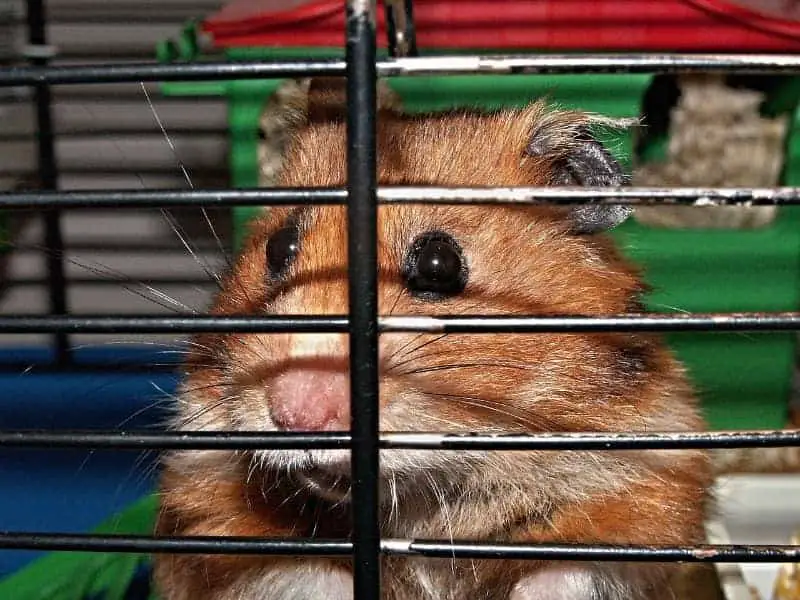
How do you protect your hamster from dust lice?
Your hamster's health should always come first. It is therefore important to protect not only the enclosure but also the hamster itself from dust lice.
Dust lice hamsters - Health risks
Dust lice can cause various health problems for your hamster. These include skin irritation, itching and, in worse cases, even skin infections. If you notice that your hamster is scratching frequently or is restless, this could be a sign of a dust lice infestation.
It is also possible for the dust lice to contaminate the feed or bedding, which can lead to further health problems. In extreme cases, they can even transmit pathogens, which can lead to more serious illnesses.
Hamster dust lice - Veterinary treatment options
If you notice a dust lice infestation in the hamster enclosure, it is advisable to consult a vet. They will be able to make an accurate diagnosis and recommend a suitable treatment. In some cases, drug treatment may be necessary to effectively combat the dust lice.
There are various medications that have been specially developed for the treatment of dust lice in hamsters. These medications are generally very effective, but should only be used under veterinary supervision.
The vet can also make further recommendations for the care and cleaning of the hamster enclosure to prevent future infestations. It is important to follow his instructions carefully to ensure the health of your hamster.
Conclusion: Dust lice hamsters
The health and well-being of your hamster is your responsibility. Dust lice may seem harmless at first glance, but they can cause a number of problems for your little friend. From skin irritations to more serious health risks, it's important to be proactive.
By regularly cleaning the enclosure, carefully observing your hamster's behaviour and seeking veterinary advice if necessary, you can minimize the risk of a dust lice infestation and give your hamster a healthy and happy life.
Frequently Asked Questions (FAQ)
How do I recognize a dust lice infestation in the hamster enclosure?
A dust lice infestation can be recognized by various signs, such as unusual scratching or restlessness on the part of the hamster. Small, moving dots may also be visible in the bedding or food.
Are dust lice dangerous for my hamster?
While dust lice are usually harmless to humans, they can be problematic for hamsters. They can cause skin irritation, itching and, in worse cases, even skin infections.
How can I prevent a dust louse infestation?
The best prevention method is to clean the hamster enclosure regularly and change the bedding. The enclosure should also be kept dry, as moisture attracts dust lice.
What treatment options are there for a dust louse infestation?
There are various methods of controlling dust lice, from insecticides to natural remedies such as diatomaceous earth. In any case, it is advisable to consult a vet.
Can I continue to feed my hamster normally despite the dust lice infestation?
It is possible that the dust lice contaminate the feed. It is therefore advisable to check the feed regularly and replace it if in doubt.
Do I have to go to the vet if I notice a dust lice infestation?
A visit to the vet is recommended to obtain an accurate diagnosis and treatment recommendation. In some cases, drug treatment may be necessary.
Author

-
Garden animal - A life with nature
Welcome to my animal blog! My name is Dirk and I am happy to take you on my journey through the fascinating world of animals and gardening.
Born 54 years ago, I have had an insatiable curiosity for the animal world around me since childhood. Although I have moved professionally in other industries, my true passion has always been animals and nature. It is remarkable how a small garden has become such an important part of my life.
Many of my fondest memories are associated with the animals that share our home. Whether it's the curious squirrels that scurry across the trees in the morning, the colorful variety of birds that visit our feeders, or the busy bees and butterflies that pollinate our flowers, every moment with them is invaluable to me.
This blog is my contribution to share my experiences, discoveries and insights with like-minded people. Here I will share stories of unforgettable encounters with animals, give tips on gardening and creating wildlife-friendly habitats, and take you on my journeys through nature.
Thank you so much for being here!
Cordial,
Dirk aka garden animal
Last posts
- 27. February 2024PetsVeganes Hundefutter – Grün und Gesund?
- 18. January 2024ChickensOregano für Hühner
- November 27, 2023HamsterDiurnal hamsters
- November 24, 2023HamsterHamster hammock

